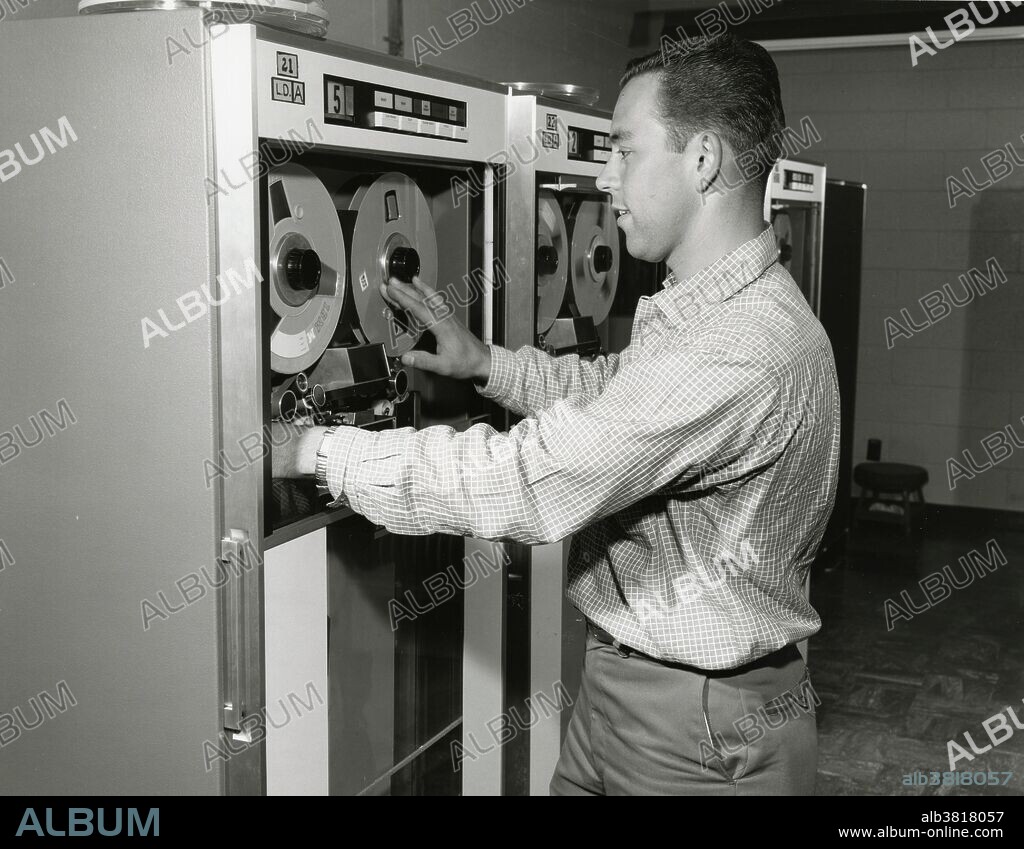alb3818057
IBM 7090 Tape Drive, LLNL, 1960s

|
Ajouter à une autre Lightbox |
|
Ajouter à une autre Lightbox |



Avez-vous déjà un compte? S'identifier
Vous n'avez pas de compte ? S'inscrire
Acheter cette image

Titre:
IBM 7090 Tape Drive, LLNL, 1960s
Légende:
Voir la traduction automatique
Lawrence Livermore National Laboratory computer operator Bob Rose changes a magnetic tape on the IBM 7090 in the Livermore Computer Center. No photographer credited, dated August 1960. The IBM 7090 was a second-generation transistorized version of the earlier IBM 709 vacuum tube mainframe computers and was designed for "large-scale scientific and technological applications". The 7090 was the third member of the IBM 700/7000 series scientific computers. The IBM 7090 was a second-generation transistorized version of the earlier IBM 709 vacuum tube mainframe computers and was designed for "large-scale scientific and technological applications". The 7090 was the third member of the IBM 700/7000 series scientific computers. The first 7090 installation was in November 1959. The 7090 used a 36-bit word length, with an address-space of 32K (32,768) words. It operated with a basic memory cycle of 2.18 ?s, using the IBM 7302 Core Storage core memory technology from the IBM 7030 (Stretch) project. With a processing speed of around 100 Kflop/s, the 7090 was six times faster than the 709, and could be rented for half the price. No photographer credited, circa 1960s.
Crédit:
Album / LLNL/Science Source
Autorisations:
Modèle: Non - Propriété: Non
Questions sur les droits?
Questions sur les droits?
Taille de l'image:
4200 x 3263 px | 39.2 MB
Taille d'impression:
35.6 x 27.6 cm | 14.0 x 10.9 in (300 dpi)
Mots clés:
ANNEES 1960 • ANNÉES 60 • ANNEES SOIXANTE • CÉLÈBRE • CELEBRITE • HOMME • ORDINATEUR • RECHERCHE • TECHNOLOGIE • XXE SIECLE
 Pinterest
Pinterest Twitter
Twitter Facebook
Facebook Copier le lien
Copier le lien Email
Email
